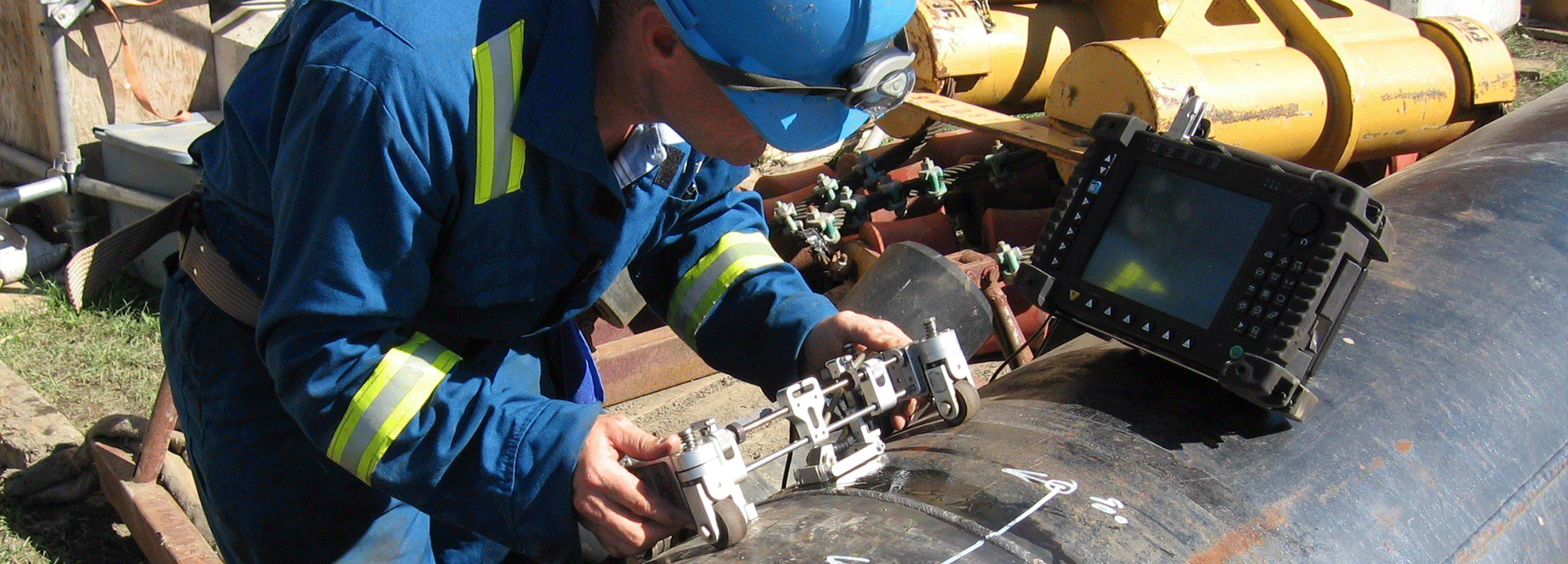How Robots are Powering UT Measurements in Hard to Reach Places

UT measurements (both spot measurements and wall thickness) are a mainstay of NDT asset inspection. However, gaining accurate data in hard to reach areas has long been a challenge, be they at height, in confined spaces or within non-oxygen atmospheres.
Solutions have been slow to be developed, with most inspections relying on time-honoured methods – in other words, with measuring tools held by human hand. The many downsides to this need no introductions: extended downtime, erection of scaffolding, rope entry, emptying of tanks, human error, safety risks etc.
All of these add up to one thing – loss of revenue. In today’s competitive landscape, a reliable method of reducing this is well overdue. But, thanks to Invert Robotics, a viable solution is finally here.
Integrated Crawler-UT Equipment Technology
Robots – and robot crawlers in particular – have been the focus of many NDT testing solutions. With their new V and H-series, Invert Robotic has successfully integrated state-of-the-art UT equipment onto a robotic crawler.
By using a buggy with front-placed encoder wheels, the technology can be deployed into either confined spaces or at height to take both spot measurements and B scans. The ability to do this without human entry or the need to work at height dramatically reduces the time needed to carry out the inspection. Add in both the accuracy of a robotic measurement (no human error) and the safety advantages and this adds up to a far superior method of testing.
Case Examples: Wall Thickness, Non-ferrous, Spot Measurements and More
The crawler has already been successfully deployed in a variety of real-world scenarios.
The first is a wholly unique service where UT scans were performed inside a non-ferrous tank. Using a vacuum V1800 robot complete with UT setup, measurements were conducted in all 4 wind directions of the cylinder and bottom of a stainless steel Hastelloy tank.
In another situation, two carbon steel gas absorbers presented a challenge due to a corroded surface. This had been caused by the regular spraying of chalk powder through the assets to reduce acidity. Despite this, a hybrid robot crawler – complete with integrated UT equipment – was deployed to successfully carry out 16 B scans.
The highly manoeuvrable H200 hybrid robot was also used to measure wall thickness and take UT spot measurements within a very crowded carbon-steel slurry tank. Multiple baffles running from top to bottom and an agitator created multiple obstacles, something that the crawler operator was able to navigate. The result was 60 spot measurements, each of a high enough quality to negate the need for a human inspector to enter the asset.
The final example was an inspection carried out on a coated carbon-steel storage tank that contained sulfuric acid. Again, the hybrid robot was utilised, with its adhesion methods of both vacuum and magnets allowing it to smoothly traverse the surface.
The Future of NDT Testing is Robotic
Major technological advances mean that the age of the robot is now upon us, with all the advantages this brings. Shortening testing time, reducing the risk to human life and allowing maintenance teams to work in a far more proactive (rather than reactive) manner is a great step forward.
This is where the Nexxis solution-based procurement model is unique, whereby we don’t work from a ‘what equipment exists that will suit your needs’ point of view. Instead, we work with companies to understand their challenges and then modify or create a solution that will overcome this.
Contact us to find out more about our range of robots or any of our other inspection products, or request a quote online.
Carry on reading How Robots Are Shaking up NDT Inspections to find out more.
